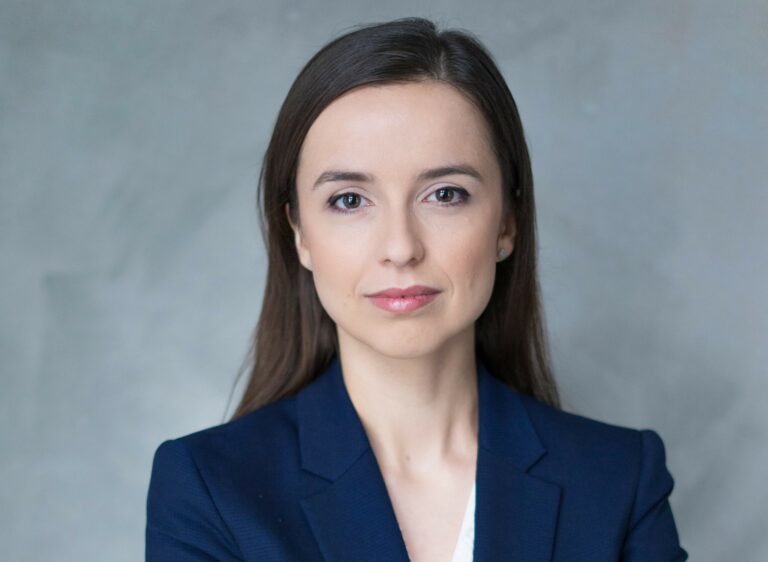Maths & Money: Prof. Jan Obłój
How to calculate the future
Professor Jan Obłój, one of the most prominent financial mathematicians of our time, graduated in 2002 from two faculties—Mathematics and Sociology—at the University of Warsaw. He then pursued further studies in Amsterdam, Paris, and London. In 2008, he became a lecturer, and in 2015, he was appointed Professor of Mathematics at St John’s College, University of Oxford. His current focus is on probability theory and its applications, particularly in financial derivatives. He also lectures on core courses for the MSc in Mathematical Finance. Professor Obłój is especially interested in the intersection of mathematical finance and probability, investigating random phenomena evolving over time and applying time-change techniques with market information.
In addition to his academic duties, Professor Obłój is an active member of several academic societies, regularly publishes in prestigious journals, and speaks at international conferences. His work has been cited in over 1,000 scientific publications, a remarkable achievement for such a young scholar. His contributions have garnered attention not only from leading mathematicians but also from financiers. His work is recognized across global financial markets by investors, bankers, stock exchanges, and insurance companies, all of whom rely on precise assessments of probabilities and risks when dealing with contracts, securities, derivatives, and other financial instruments—particularly when it comes to calculating future values.
When to leave the casino table
Interestingly, Professor Obłój has explored the concept of future value in the context of gambling, publishing several papers on the topic. His research focuses on the ever-intriguing question: “When should a gambler exit the game?” In his article Path-Dependent and Randomized Strategies in Barberis’ Casino Gambling Model, he analyzed exit strategies based on betting history (the so-called path-dependent strategy) for gamblers who have lost several bets. Gamblers can either leave the game to avoid further losses or continue playing by adding a random element—such as flipping a coin to decide whether to exit (heads) or continue (tails). His research showed that a path-dependent strategy combined with a random element can improve results compared to a path-independent strategy, where decisions are made solely based on current profit or loss. In other words, “the coin” can help maximize profits.
In another article, Optimal Exit Time from Casino Gambling: Strategies of Precommitted and Naive Gamblers, Professor Obłój analyzed two types of gamblers: those who follow a fixed strategy (precommitted) and those who change strategies during the game (naive). The precommitted gamblers tend to exit when they start losing, while naive gamblers often continue even as losses grow. In both cases, path-dependent and randomized strategies help manage risks and improve outcomes. Although these studies focused on gambling, their findings have had significant implications in the world of investments, leading to more professional publications on the subject.
How to earn on financial markets
In his article The Numéraire Property and Long-Term Growth Optimality for Drawdown-Constrained Investments, Professor Obłój and his co-authors discuss how investors can maximize long-term profits and minimize losses by setting a fixed drawdown threshold (the percentage decrease from the portfolio’s present value). For instance, setting a 10% drawdown means that the portfolio’s value should not drop below 90% of its current level. Investors then create portfolios with a mix of low-risk assets like treasury bonds (T-bonds) and high-risk assets like stocks or cryptocurrencies. For example, they might allocate 60% to high-tech stocks and 40% to T-bonds. If the portfolio value drops by 8%, the investor can increase the T-bond allocation to 50% to reduce risk while maintaining growth potential. The key to optimal investment strategies lies in dynamic portfolio adjustments, requiring continuous price monitoring.
In another article, Robust Framework for Quantifying the Value of Information in Pricing and Hedging, Professor Obłój and his co-authors investigate how access to information affects the value and safety of investments. They compare investors who only observe stock prices with those who have access to additional information. Their findings show that the latter group can limit their strategies to specific pricing paths to gain an advantage, which can be expressed in mathematical models. This research demonstrates that the value of additional information can be quantified and used to make better investment decisions.
Overall, Professor Obłój’s research provides valuable insights into managing investments and risks. His findings suggest that path-dependent randomized strategies are more effective than relying on specific outcomes, while maintaining a fixed strategy is more efficient than frequently changing it during the investment process.
In 2022, the Polish Mathematical Society awarded Professor Obłój the Hugon Steinhaus Award, one of its highest honors, given to distinguished mathematicians since 1979. In 2024, he was also appointed President of the Executive Committee of the Bachelier Finance Society, an international non-profit organization for financial mathematicians, founded in 2014 in Pennsylvania, USA, to unite scholars and support relevant publications. There are also rumors that Professor Obłój may soon head the 800-year-old Mathematical Institute at the University of Oxford, one of nine departments within the university’s Mathematical, Physical, and Life Sciences Division.







